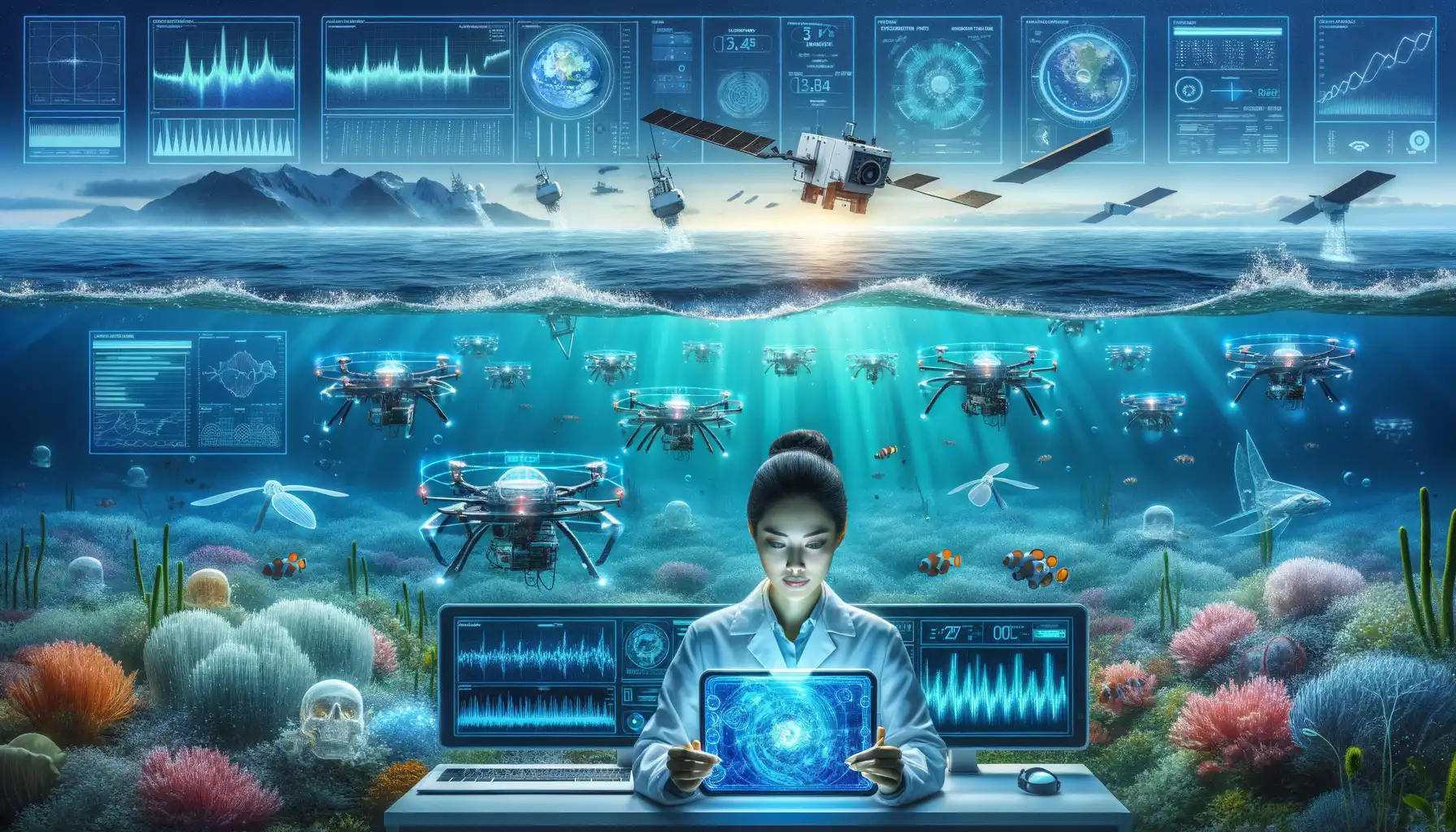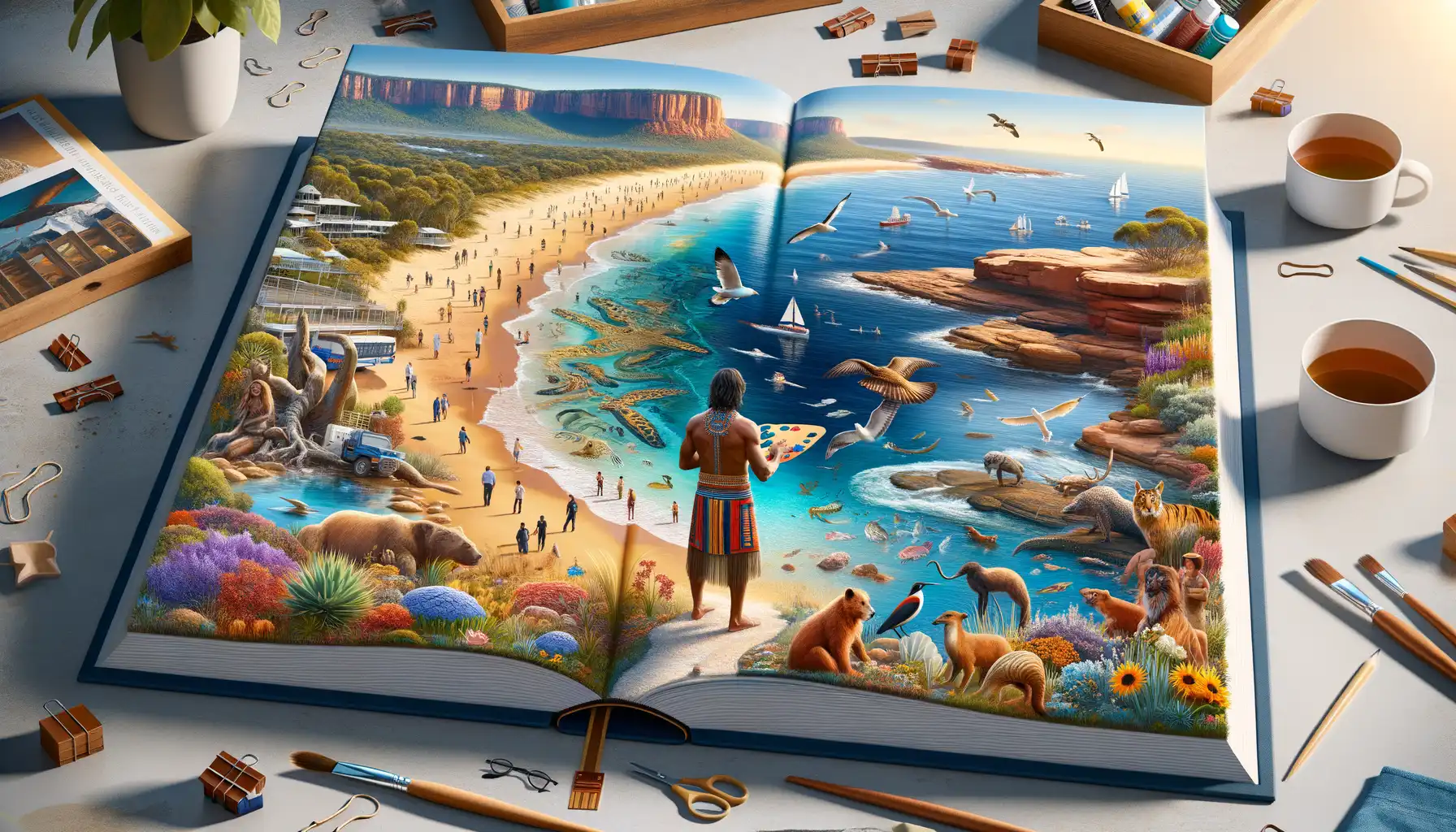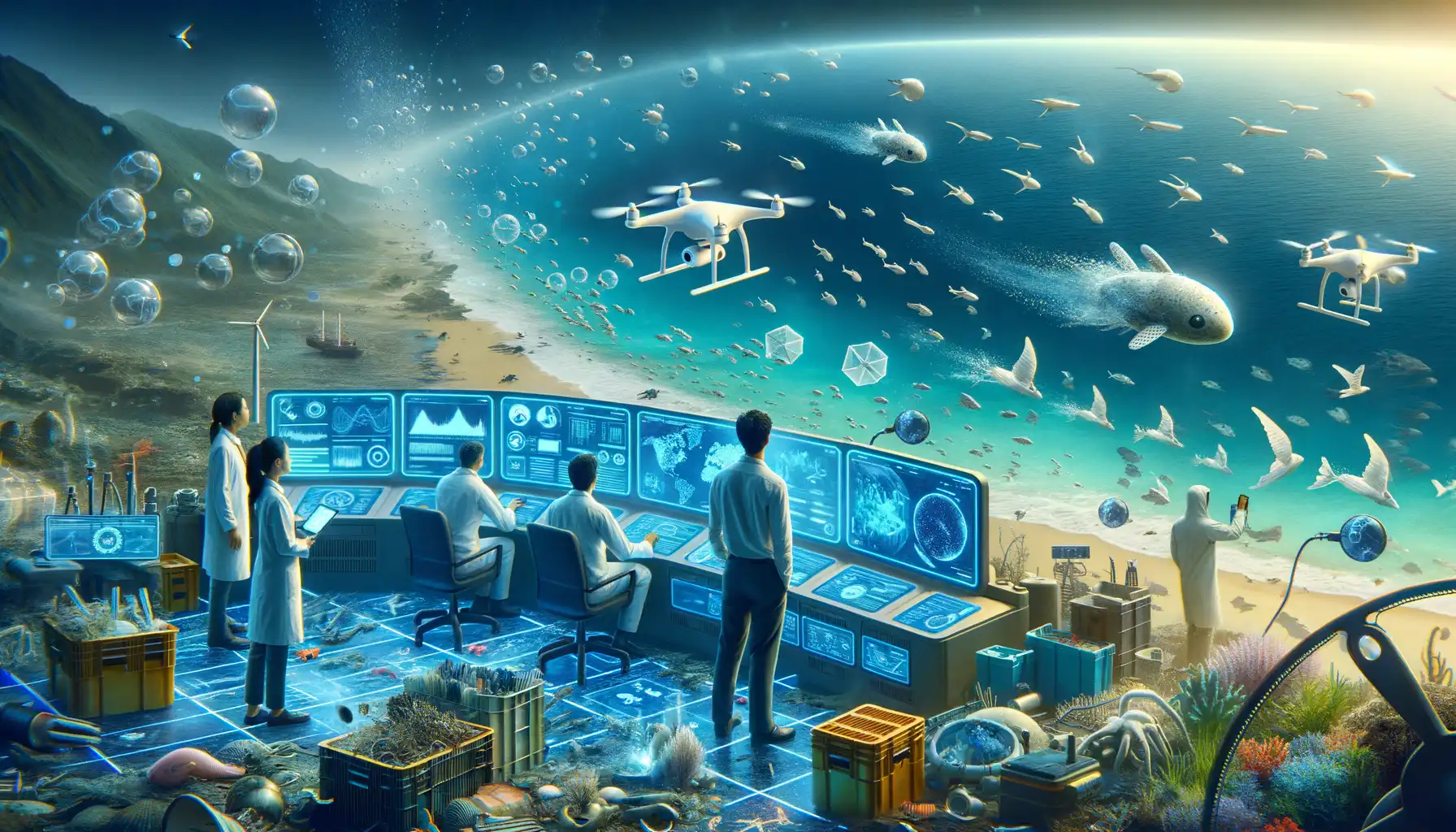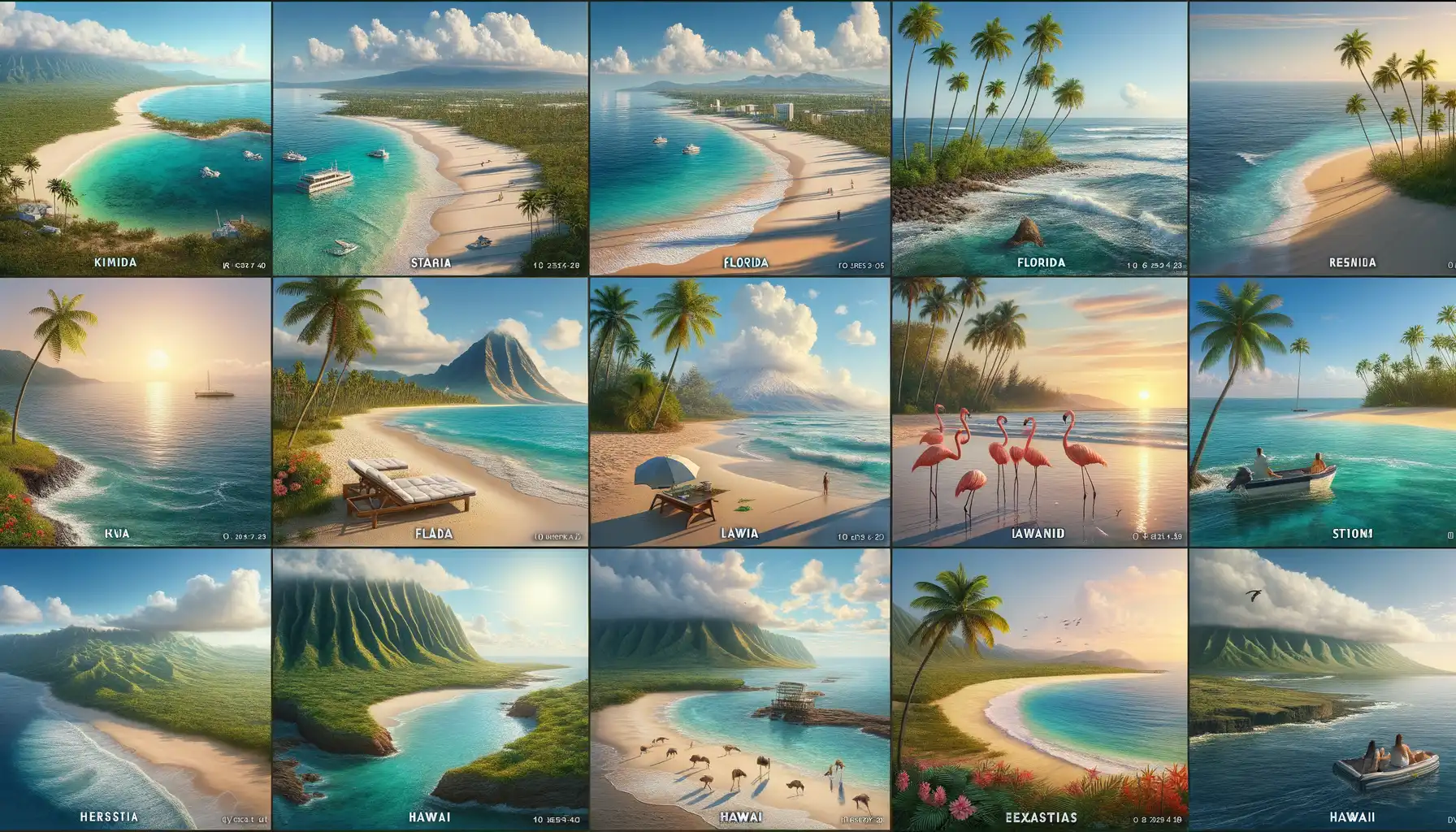Introduction to AI and Marine Conservation
Diving Into the World of AI and Marine Protection
Imagine peering beneath the glittering blue waves off the Australian coast. Among teeming schools of fish and majestic coral reefs lies an entire world fighting for survival. Now, picture a silent ally—one that doesn’t breathe or swim but works tirelessly to protect this vibrant underwater haven. That ally is Artificial Intelligence (AI).
AI isn’t just for self-driving cars or chatbots—it’s also making waves in marine conservation. Think of it as the ultimate ocean detective, capable of spotting changes invisible to the human eye. From analyzing the whispers of whale songs to identifying illegal fishing vessels from satellite images, AI offers tools that are equal parts brilliant and revolutionary.
Isn’t it fascinating how technology we often take for granted—like algorithms and sensors—becomes a lifeline for creatures hundreds of meters below the surface? The oceans may be vast, but with the unique capabilities of AI, caring for them no longer feels like an impossible task.
Applications of AI in Monitoring Marine Ecosystems

How AI Sees the Ocean Like Never Before
Imagine peering into the vast Australian marine ecosystem, where whales glide through sapphire waters and vibrant coral reefs bustle with life. Now imagine doing this with “superhuman” eyes. That’s the magic of integrating Artificial Intelligence (AI) into ocean monitoring—it’s like giving scientists a crystal ball for the sea!
AI-powered tools can analyze thousands of images and audio recordings faster than any human could dream of. Take drones skimming over the coastline: their cameras don’t just capture pretty pictures; they use AI to spot endangered turtles nesting or sneaky vessels fishing illegally. In the deep sea, underwater robots (yeah, actual robots!) armed with AI detect changes in coral reef health by analyzing tiny variations in color or texture—things we humans would likely miss without years of training.
- Acoustic sensors translate whale songs into data, identifying specific species and migration patterns.
- Satellite imaging detects harmful algae blooms before they wreak havoc on marine ecosystems.
With these cutting-edge tools, researchers are no longer just passive observers of nature—they’re becoming proactive guardians of underwater life. It’s awe-inspiring to see technology help bridge the gap between us and the mysterious, breathtakingly alive world under the waves.
Diving Deep with AI’s Unexpected Talents
Here’s something wild: AI doesn’t just watch; it listens, predicts, and even judges. Off Australia’s coasts, autonomous submarines equipped with machine learning algorithms predict cyclones and storm surges by analyzing ocean temperature shifts. And let’s not forget AI’s knack for spotting trouble—like recognizing invasive species trying to muscle their way into delicate ecosystems.
One standout application is using AI to monitor plastic pollution hotspots. By parsing satellite imagery, systems like these can pinpoint floating garbage patches and even guide cleanup efforts. Imagine an “ocean janitor” powered by algorithms—it’s as close to sci-fi as conservation gets!
Case Studies: Success Stories from the Australian Coast

Rescuing Turtles: AI to the Rescue
Picture this: a stranded sea turtle tangled in discarded fishing nets, its movement restricted, its life hanging in delicate balance. Along the Australian coastline, such grim imagery has become all too familiar. But thanks to innovative AI solutions like the use of drones equipped with image recognition software, these majestic creatures are getting a second chance.
Local conservationists partnered with AI developers to deploy drones that scan vast stretches of beach for distressed wildlife. The AI doesn’t just spot turtles—it identifies their condition, detects entanglements, and even assesses the surrounding hazards. In one case near Queensland, a drone spotted three injured turtles in under 20 minutes—a task that would have taken a team of volunteers hours on foot. Each turtle was promptly rescued, rehabilitated, and later released back into the wild.
This isn’t just technology at work; it’s hope delivered on the wings of progress.
Monitoring Coral Reefs: A Symphony of Sound and Sensors
How do you listen to the whispers of the ocean? Scientists along the Great Barrier Reef are doing exactly that, using AI-powered hydrophones to monitor the health of coral ecosystems. These underwater microphones capture the symphony of marine life—the clicks, chirps, and hums emitted by fish and other marine creatures.
The data is then processed by AI algorithms that classify sounds and identify abnormalities. If the usual chatter drops or invasive species’ noises spike, it’s an early warning that something’s wrong.
- In one groundbreaking project, a reef near Cairns was saved from a crown-of-thorns starfish outbreak when AI detected their distinct clicking sounds early.
- Conservationists rapidly removed the intruders, preserving the delicate balance of the reef.
Through these innovative approaches, AI is giving marine life a voice—and we’re finally listening.
Challenges and Ethical Considerations

When Progress Meets Complex Realities
There’s no denying it—deploying AI to protect marine life feels like a leap into the future. But, as with any technological solution, there are steep cliffs to climb and moral lines to walk. For one, ensuring the accuracy of AI models is no simple feat. Imagine training a machine to identify whale songs or coral bleaching events. Sounds exciting? It is! Yet, these systems rely heavily on clean, abundant datasets—and our oceans don’t always play fair. Data gaps due to murky waters, limited access, or seasonal changes can leave machines second-guessing.
On the ethical front, researchers have to tread delicately. Picture this: drones buzzing over nesting turtles or camera-laden buoys tracking dolphins. While the data gathered is invaluable, what about its impact on the animals themselves? Does increased monitoring lead to unintended stress?
- Should we prioritize the preservation of certain species at the expense of others?
- And who decides how much human interference is “too much”?
These dilemmas aren’t just academic—they ripple through real-world conservation efforts, forcing us to confront tough questions that machines can’t answer for us.
Future Prospects for AI in Marine Life Preservation

Revolutionary Tools to Safeguard Our Oceans
Imagine a world where machines collaborate with humans to restore harmony beneath the waves. This is no longer just a futuristic vision—it’s happening right now, and the potential for what’s next is breathtaking. Artificial Intelligence is evolving to become an unstoppable ally in marine life preservation. Let’s talk about what the horizon holds.
One of the most thrilling advances involves AI-powered underwater drones. Picture nimble, intelligent robots equipped with cameras and sensors, navigating complex coral reefs while collecting data. These devices could monitor endangered species like the Australian green sea turtle or even detect illegal fishing activity from hundreds of miles away! The possibilities are as expansive as the oceans themselves.
- Predictive modeling: AI will forecast environmental challenges—think coral bleaching or species migration patterns—before they turn into full-blown crises.
- Dynamic restoration: From 3D-printed coral structures to kelp bed recovery, AI analytics can supercharge ecosystem regeneration.
A Vision of Caring Machines
But here’s the real magic: the next era of AI won’t just be smart; it’ll be compassionate, in its own way. By learning to understand ocean dynamics better than any human could, these technologies will allow us to reimagine conservation strategies. Just think of automated microplastics collectors, guided by machine learning, sweeping our coasts clean while leaving precious ecosystems undisturbed.
The future looks bright—and teeming with marine life ready to thrive again—all thanks to thoughtful innovation and a bit of help from AI’s relentless problem-solving abilities.




